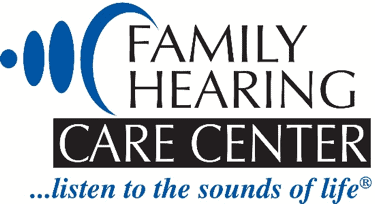
Dispelling Myths About Hearing Loss
With nearly 1 in 5 people having some degree of hearing loss, you or someone you know may be living with impaired hearing. Though hearing loss is common, it is still widely undertreated – with only a third of people who could benefit from treatment, actually receiving it. Contributing to action on hearing loss is the various misconceptions that people often have about it. In dispelling these myths, you can gain a greater understanding about hearing loss, supporting intervention.
Myth: hearing loss is not a common health issue people experience.
Fact: over 48 million people live with some degree of hearing loss, making it the third most pervasive medical condition today. Hearing loss is twice as common as diabetes or cancer. Additionally, the National Institute on Deafness and Other Communication Disorders estimates that 1 in 3 adults, 65-74 have hearing loss. This increases to half of all adults, 75 and older who have disabling hearing loss. It is also estimated that about 1 in 4 adults who report excellent to good hearing already have hearing damage.
Myth: hearing loss only impacts older adults.
Fact: one of the most common myths about hearing loss is that it only affects older adults. While aging is one cause of hearing loss, there are other factors that can impact hearing health. These factors, including exposure to loud noise and head injuries, are more prevalent among younger adults. The following statistics illuminate how hearing loss is a reality across the age spectrum:
- 40 million people, ages 20-69 have hearing loss.
- 3 of every 1,000 children in the U.S. are born with detectable hearing loss in one or both ears.
- 15% of children and young teens, ages 6-19, have some degree of hearing loss.
- Nearly 20% of teenagers have a detectable hearing loss.
The World Health Organization (WHO) estimates that over 1 billion people globally, ages 12-35, are at high risk of developing hearing loss due to loud noise exposure. These statistics reveal that people of all ages are affected by hearing loss.
Myth: I can hear so I don’t have hearing loss.
Fact: people often think that because they can still hear, they are not experiencing hearing loss. But it is important to know that hearing loss ranges from mild to severe. Mild hearing loss involves being able to hear, but not everything or not as easily. You may hear but ask others to repeat what they said, speak louder, have to lip read to identify individual words, or struggle through a conversation. The longer this is left untreated, the worse hearing loss can become.
Myth: hearing loss can be cured.
Fact: sensorineural hearing loss is the most common type, accounting for 90% of the hearing loss that people experience today. This type of hearing loss is permanent and incurable. Sensorineural hearing loss occurs in the inner ear when sensory cells are damaged. There are thousands of sensory cells in the inner ear which convert incoming sound waves into electrical signals. These signals get sent to the brain where they are further processed, this includes assigning meaning which allows us to understand what we hear.
When sensory cells are damaged, their ability to do this is reduced which results in the brain receiving less auditory information and this process hearing loss. Unlike other types of cells, sensory cells in the inner ear do not regenerate. There are also no medical treatments that can repair these cells, resulting in chronic hearing loss.
Myth: hearing loss is not a serious health condition.
Fact: untreated hearing loss can have massive effects on everyday life, health, and wellness. In addition to straining hearing and communication, relationships and social life can also suffer. Also, extensive research shows that untreated hearing loss can increase several health risks including cognitive decline, falls, accidental injuries, and depressive symptoms.
Myth: hearing aids are outdated.
Fact: hearing aids are the most common treatment for hearing loss. People often think of hearing aids as bulky, outdated devices that they want to avoid wearing. But similar to most electronic devices today, hearing aids have experienced significant innovation. There is a wide range of options that come in different styles, colors, and offer savvy features. These wearable pieces of technology are more aesthetically pleasing, allowing them to easily integrate into everyday life.
Contact us today to learn more about hearing loss and the many resources available to support your hearing health.
